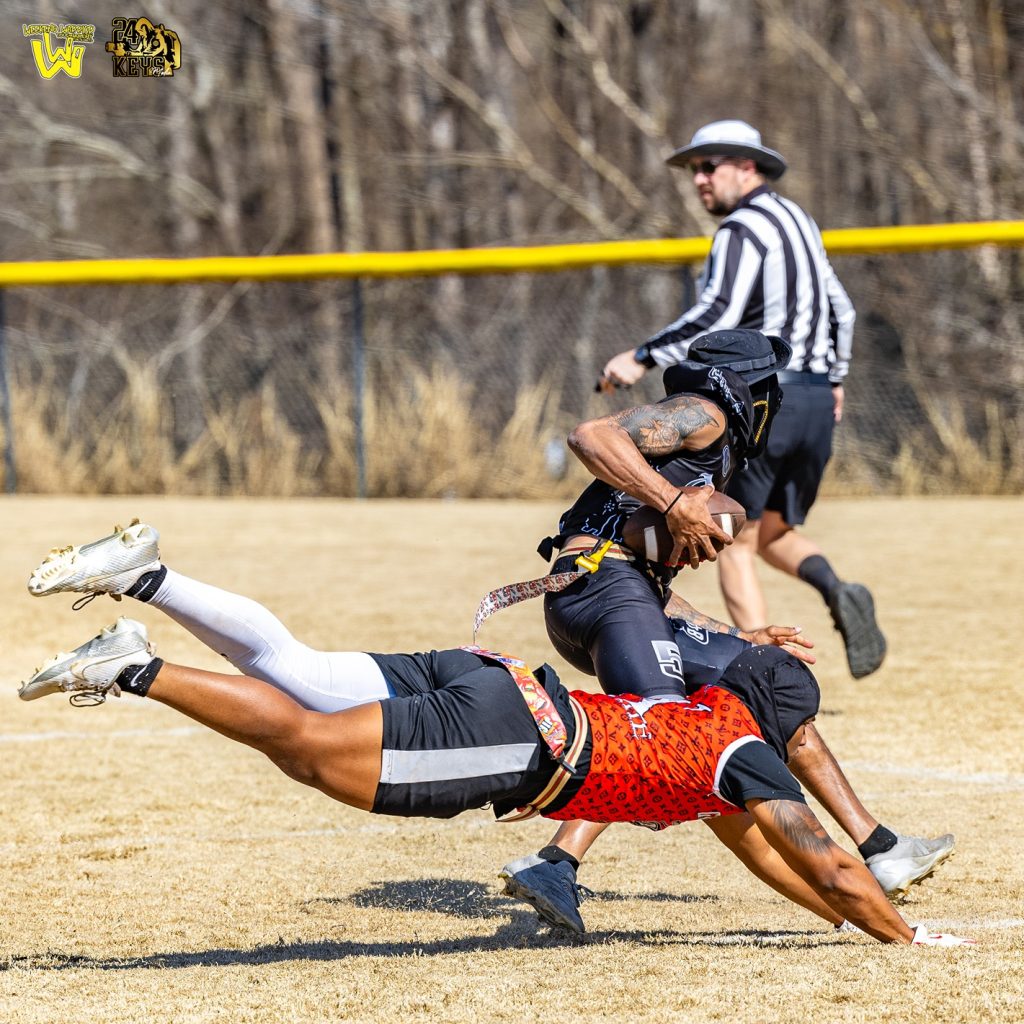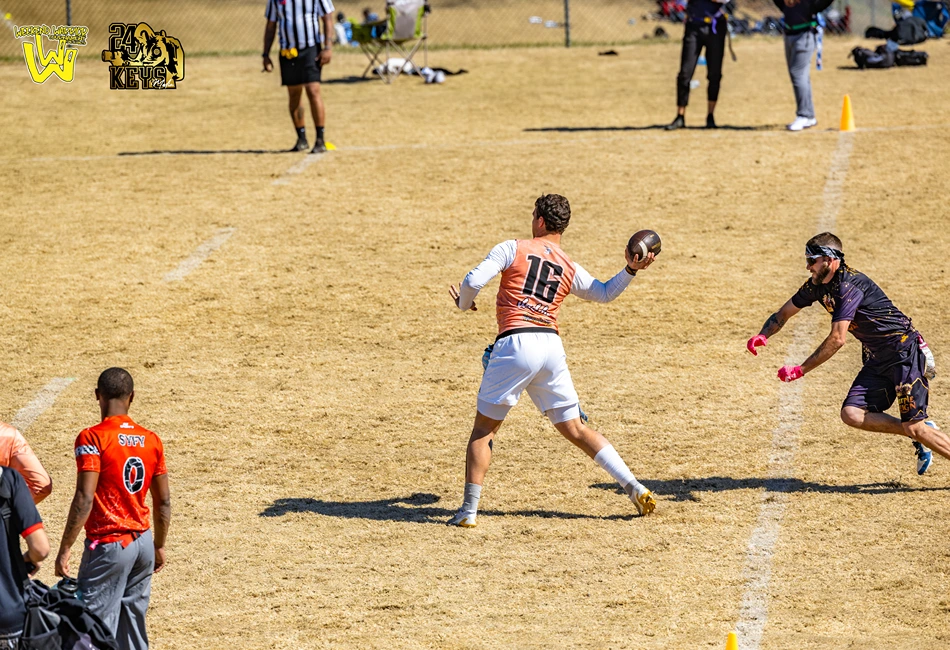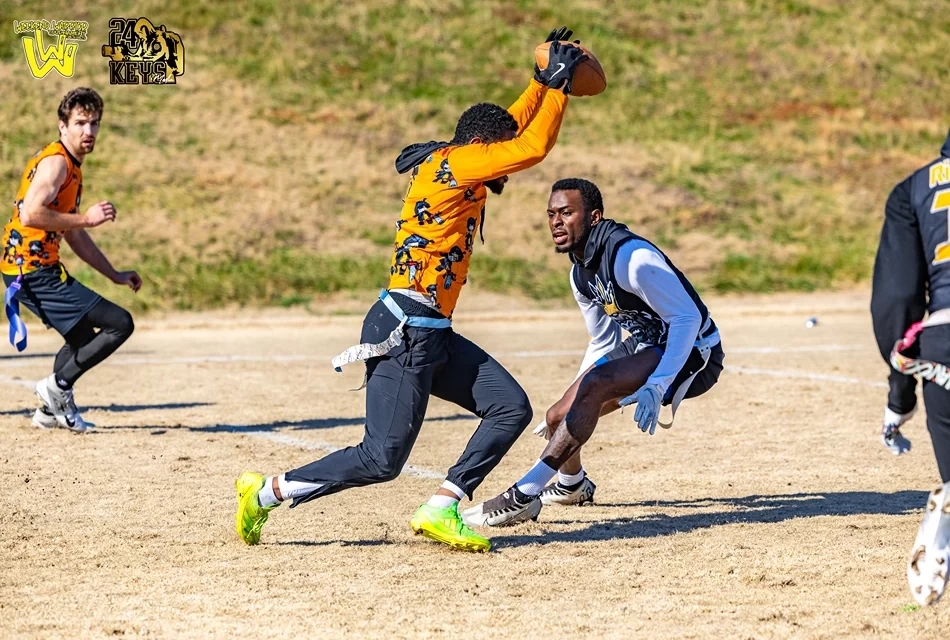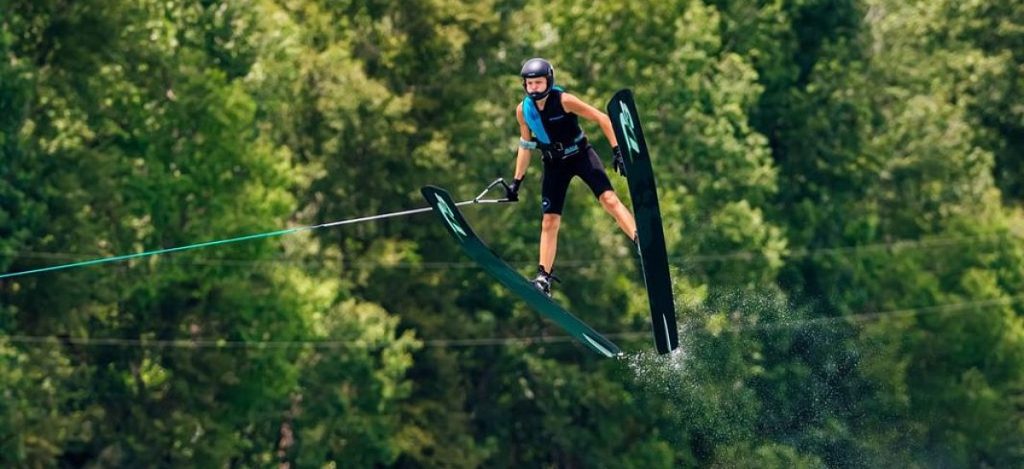Friday night lights still shine in The Palmetto State
By Dave Bodle
Flag football is no longer just a casual playground pastime. Across South Carolina and much of the United States, it’s quickly becoming one of the fastest-growing organized sports, particularly among youth and female athletes.
Friday night lights still shine bright in South Carolina with five public school divisions and a private school division playing for state championships. As safety concerns shift the landscape of traditional tackle football, and interest in inclusive, fast-paced alternatives grows, flag football has surged in popularity. This momentum is being fueled by national support, local grassroots programs, and increasing opportunities for girls to take the field and shine.

Why Flag Football Is Growing
At the core of flag football’s growth is its accessibility. Unlike tackle football, which requires expensive gear, contact-specific training, and often a higher injury risk, flag football is a non-contact version of the sport that only requires a football, some belts with flags, and a safe playing field. The low barrier to entry makes it appealing to schools, parks departments, and parents alike.
Equally important is the safety factor. As parents become more cautious about the long-term effects of concussions and repetitive head trauma in contact sports, flag football provides a safer alternative while still teaching core football skills like passing, catching, teamwork and strategic play.
National visibility is also playing a role. In 2022, the NFL partnered with Nike and the National Association of Intercollegiate Athletics (NAIA) to sponsor women’s collegiate flag football programs. The league also promotes flag football through its NFL FLAG initiative, which serves more than 600,000 youth athletes across all 50 states. And in 2023, the International Olympic Committee announced flag football will debut as an official sport at the 2028 Los Angeles Summer Olympics, bringing global legitimacy to a sport that was once an intramural side activity.
From small towns to urban areas, communities across South Carolina are investing in flag football programs—often as part of broader efforts to improve youth and adult engagement and physical activity. City of Charleston Recreation offers more than 35 8 x 8 men’s, 11 x 11 men’s and women’s 8 x 8 leagues. North Myrtle Beach Parks & Recreation offers a Fall league for kids 7-10. Greenville Parks & Recreation has two adult leagues for flag football.. The co-ed 6 x 6 and the new men’s 5 x 5 are popular. Regardless of the season, flag football is being played in South Carolina.

Girls Are Changing the Game
Perhaps the most compelling chapter in the flag football story is the explosion of girls’ participation.
Historically sidelined in traditional football settings, girls now have growing opportunities to compete, excel and even earn college scholarships through flag football. The NFL and Nike’s Girls Flag Football Grant Program has helped launch new middle and high school girls’ leagues across multiple states, supplying uniforms, equipment, and funding to get teams started.
March 2025 saw York County kick off the first girls flag football league in South Carolina. The Carolina Panthers partnered with the York County middle schools in a club level program. Fourteen teams with 15 athletes each will compete over a seven-week season with two games per week. Plans are to expand the program to the high school level and have the sport sanctioned in South Carolina. To get the league started, the Carolina Panthers donated $49,000 which went toward uniforms, equipment and coach and player development.
At the college level, Conference Carolinas has 14 girls teams playing in three divisions. Conference Carolinas was the first Division I or II to sponsor women’s flag football at the varsity level.
Girls are also thriving in co-ed environments. National competitions like the NFL FLAG Championships, held annually at the Pro Bowl, showcase elite-level female players, many of whom start as early as age 6. The sport’s inclusive design allows girls to shine in roles as quarterbacks, receivers, and defenders.
Looking Ahead
With its Olympic debut looming in 2028 and strong institutional backing from the NFL, flag football is poised for even greater growth in the coming years. More school districts are expected to adopt girls’ programs, while co-ed and recreational leagues expand in both urban and rural areas.
For communities, investing in flag football isn’t just about sports—it’s about youth development, equity, and providing healthy, fun alternatives for kids and teens. For girls, it’s about finally having the chance to take the field, compete, and be seen.
Looking for a field for your next flag football competition? South Carolina has you covered!








